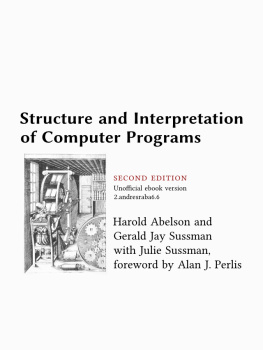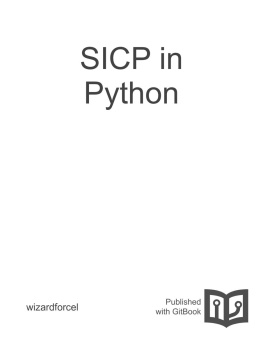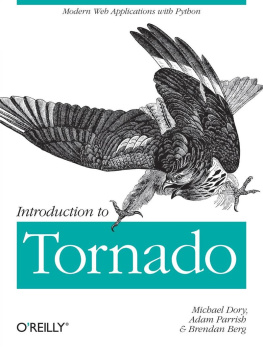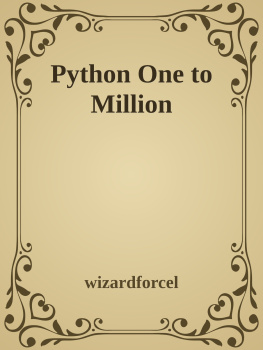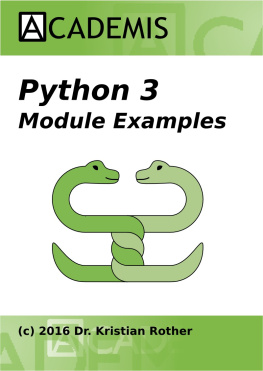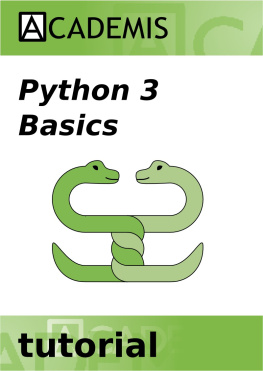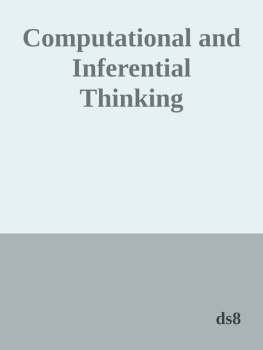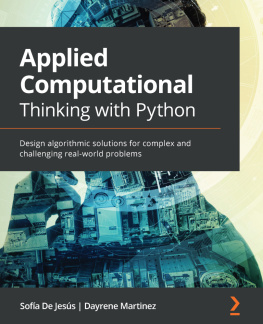it-ebooks - Computational Statistics in Python
Here you can read online it-ebooks - Computational Statistics in Python full text of the book (entire story) in english for free. Download pdf and epub, get meaning, cover and reviews about this ebook. year: 2016, publisher: iBooker it-ebooks, genre: Computer. Description of the work, (preface) as well as reviews are available. Best literature library LitArk.com created for fans of good reading and offers a wide selection of genres:
Romance novel
Science fiction
Adventure
Detective
Science
History
Home and family
Prose
Art
Politics
Computer
Non-fiction
Religion
Business
Children
Humor
Choose a favorite category and find really read worthwhile books. Enjoy immersion in the world of imagination, feel the emotions of the characters or learn something new for yourself, make an fascinating discovery.

Computational Statistics in Python: summary, description and annotation
We offer to read an annotation, description, summary or preface (depends on what the author of the book "Computational Statistics in Python" wrote himself). If you haven't found the necessary information about the book — write in the comments, we will try to find it.
Computational Statistics in Python — read online for free the complete book (whole text) full work
Below is the text of the book, divided by pages. System saving the place of the last page read, allows you to conveniently read the book "Computational Statistics in Python" online for free, without having to search again every time where you left off. Put a bookmark, and you can go to the page where you finished reading at any time.
Font size:
Interval:
Bookmark:
From: Computational Statistics in Python
Contents:
This lecture is based loosely on the online tutorial :http://www.afterhoursprogramming.com/tutorial/Python/Introduction/
We will be using Python a fair amount in this class. Python is ahigh-level scripting language that offers an interactive programmingenvironment. We assume programming experience, so this lecture willfocus on the unique properties of Python.
Programming languages generally have the following common ingredients:variables, operators, iterators, conditional statements, functions(built-in and user defined) and higher-order data structures. We willlook at these in Python and highlight qualities unique to this language.
Variables in Python are defined and typed for you when you set a valueto them.
This makes variable definition easy for the programmer. As usual,though, great power comes with great responsibility. For example:
If you leave out word, spell-check will not put the word in you Taylor Mali, The the impotence of proofreading
If you accidentally mistype a variable name, Python will not catch itfor you. This can lead to bugs that can be hard to track - so beware.
The usual typecasting is available in Python, so it is easy to convertstrings to ints or floats, floats to ints, etc. The syntax is slightlydifferent than C:
Note that the typing is dynamic. I.e. a variable that was initally sayan integer can become another type (float, string, etc.) viareassignment.
Python has some other special data types such as lists, tuples anddictionaries that we will address later.
Note the behavior of / when applied to integers! This is similar to thebehavior of other strongly typed languages such as C/C++. The result ofthe integer division is the same as the floor division //. If you wantthe floating point result, the arguments to / must be floats as well (orappropriately typecast).
Python has the usual iterators, while, for, and some other constructionsthat will be addressed later. Here are examples of each:
The most important thing to note above is that the range function givesus values up to, but not including, the upper limit.
This is unremarkable, so we proceeed without further comment.
Again, nothing remarkable here, just need to learn the syntax. Here, weshould also mention spacing. Python is picky about indentation - youmust start a newline after each conditional statemen (it is the same forthe iterators above) and indent the same number of spaces for everystatement within the scope of that condition.
Four spaces are customary, but you can use whatever you like.Consistency is necessary.
Python has another type of conditional expression that is very useful.Suppose your program is processing user input or data from a file. Youdont always know for sure what you are getting in that case, and thiscan lead to problems. The try/except conditional can solve them!
Here, we have tried to add a number and a string. That generates anexception - but we have trapped the exception and informed the user ofthe problem. This is much preferable to the programming crashing withsome cryptic error like:
Notice that the function does not specify the types of the arguments,like you would see in statically typed languages. This is both usefuland dangerous. For example:
In a statically typed language, the programmer would have specified thetype of a and b (float, int, etc.) and the compiler would havecomplained about the function being passed a variable of the wrong type.This does not happen here, but we can use the try/except construction.
One of the most important features of Python is its powerful and easyhandling of strings. Defining strings is simple enough in mostlanguages. But in Python, it is easy to search and replace, convertcases, concatenate, or access elements. Well discuss a few of thesehere. For a complete list, see:http://www.tutorialspoint.com/python/python_strings.htm
Now lets try some other string operations:
There are several things to learn from the above. First, Python hasassociated an index to the string. Second the indexing starts at 0, andlastly, the upper limit again means up to but not including (a[0:5]prints elements 0,1,2,3,4).
This is fun! What else can you do with strings in Python? Pretty muchanything you can think of!
Lists are exactly as the name implies. They are lists of objects. Theobjects can be any data type (including lists), and it is allowed to mixdata types. In this way they are much more flexible than arrays. It ispossible to append, delete, insert and count elements and to sort,reverse, etc. the list.
Font size:
Interval:
Bookmark:
Similar books «Computational Statistics in Python»
Look at similar books to Computational Statistics in Python. We have selected literature similar in name and meaning in the hope of providing readers with more options to find new, interesting, not yet read works.
Discussion, reviews of the book Computational Statistics in Python and just readers' own opinions. Leave your comments, write what you think about the work, its meaning or the main characters. Specify what exactly you liked and what you didn't like, and why you think so.


